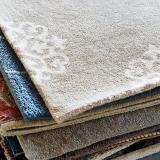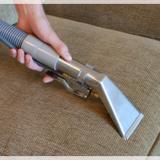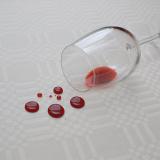Our Blog
Please feel free to post a question or just join the conversation.
Silk is luxurious and elegant but vulnerable to sunlight, humidity, and salt air. Learn the strengths and weaknesses of silk in upholstery, drapes, and wall coverings with expert insight from Alec’s Carpet & Upholstery Cleaning.The Beauty and Challenges of Silk in Upholstery and Home Décor
Silk has long been one of the most desirable fibers in the world. From elegant clothing to high-end upholstery, draperies, and even wall coverings, silk is prized for its luxurious sheen and soft, refined feel. But as with all fine materials, it’s important to understand not only its beauty—but also its vulnerabilities.
The Strengths of Silk
Silk isn’t just beautiful—it’s also one of the strongest natural protein fibers. Some of its key qualities include:
High tensile strength – Silk can stretch up to 15% before breaking.
Moderate abrasion resistance – It can withstand a reasonable amount of friction compared to other delicate fibers.
Excellent absorbency – This makes it comfortable and versatile but also introduces potential risks.
These properties make silk a favored choice for upholsterers and designers. However, the very qualities that make it special can also lead to problems over time.
The Downsides of Silk in Home Environments
Silk’s absorbency and strength can work against it in certain conditions:
Tension from upholstery – Because of its tensile strength, upholsterers often stretch silk tightly. When exposed to moisture and humidity, the fibers expand and contract, increasing stress on the fabric.
Salt exposure – In waterfront homes near the ocean, silk easily absorbs airborne salt. This accelerates weakening and deterioration of the fibers.
Sunlight damage – Direct sunlight combined with salt air leads to rapid fabric degradation, often referred to as “dry rot.” At this stage, even light contact can cause the silk to crack and tear.
One striking example of this is the silk draperies once hanging in the Newport Mansions. Over time, sunlight and exposure to the environment caused them to shred, eventually requiring replacement.
Real-World Examples
Upholstery on oceanfront homes: I’ve inspected silk-covered furniture where just touching the surface produced a faint cracking sound—the fibers had become so brittle from salt air and sunlight that they were beyond repair.
Silk as wall coverings: At a Boston waterfront residence, silk wall fabric began rippling shortly after installation. When the windows were opened, humid salt air caused the silk to expand. Closing the windows and running air conditioning restored the humidity to installation levels, pulling the fabric taut again—but only temporarily.
Balancing Beauty with Practicality
Like all fabrics, silk offers both advantages and disadvantages. Its elegance and luxury are undeniable, but homeowners need to consider long-term maintenance and environmental conditions before using it.
Tips for preserving silk in the home:
Avoid placing silk furniture or drapes in direct sunlight.
Limit exposure to salt air by keeping windows closed in waterfront locations.
Understand that silk may expand and contract with humidity changes.
When chosen thoughtfully and cared for properly, silk can bring unmatched beauty and sophistication to any interior. But without planning, its vulnerabilities can shorten its lifespan dramatically.
[caption id="attachment_2755" align="alignnone" width="768"]Silk offers beauty and luxury in upholstery and drapes but is highly sensitive to sunlight, humidity, and salt air exposure.[/caption]
note_stackRelated Posts
Blog Categories
-
Carpet & Upholstery Cleaning (15)
-
 Carpet Cleaning (15)
Carpet Cleaning (15)
-
 Spot Cleaning (14)
Spot Cleaning (14)
-
Uncategorized (5)
-
 About Rugs (5)
About Rugs (5)
-
 Upholstery Cleaning (5)
Upholstery Cleaning (5)
-
 About Carpets (3)
About Carpets (3)
-
Outdoor Cushion Cleaning (2)
-
 Fabric Protection (2)
Fabric Protection (2)
-
 Leather Upholstery (2)
Leather Upholstery (2)
-
 Fabrics (1)
Fabrics (1)
-
 Stains on Carpets (1)
Stains on Carpets (1)
-
 Discussions on Carpet & Upholstery (1)
Discussions on Carpet & Upholstery (1)
-
 News (1)
News (1)
